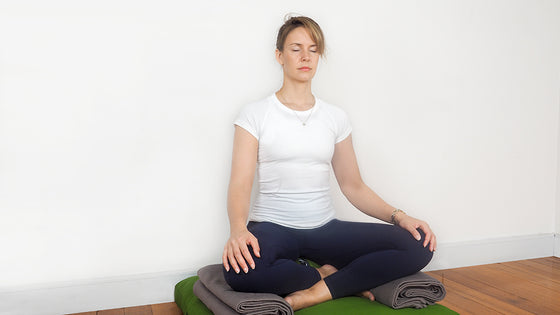- Ergonomic Products
- Ergonomic Furniture
- Yoga
- Meditation
- Pilates
- Air Treatment
- Blog
- Resources
- About Us
- Wholesale
- Ergonomic Products ▼
- Ergonomic Furniture ▼
- Yoga ▼
- Meditation ▼
- Pilates ▼
- Air Treatment ▼
- Blog
- Resources ▼
- About Us
- Wholesale
- Sign in

March 10, 2016

“An uninterrupted flow of awareness towards awareness.” This is the definition of meditation I wrote about last week. When I focus on this definition when I’m meditating, I endeavour to practice being aware of the subtle presence of awareness that exists inside me at all times regardless of what thoughts, emotions or sensory activity I may be experiencing.
When we go about establishing a meditation practice and we come across a definition such as this one, it’s quite possible that we may misunderstand what is meant by the word “uninterrupted. When I first began to meditate my research led me to statements such as: “The state of meditation is beyond the mind and the senses.” “To meditate is to still the mind.” “Establish yourself in the thought free state of consciousness—meditate.” I believed that unless my mind was totally free from thought, my meditation was unsuccessful, or, in fact it was a failure. Needless to say I was endlessly frustrated by my meditation practice because the more effort I put into trying to become thought free, the more my meditation would be “interrupted” by thoughts. My mind and senses became an unrelenting adversary that I would do battle with every time I meditated, and guess who won all the battles?
This scenario reminds me of a story my meditation teacher use to tell. Once a student of a great meditation Master wanted to learn how to meditate so she went up to the Master and asked him, “Please, teach me how to meditate.” The Master said, “Fine, go over there and sit down and close your eyes, but whatever you do, don’t think of a monkey.” The student thought, “Well, that’s easy enough, I can do that.” As soon as she sat down to meditate, she asked herself, “Now what was it the Master told me to do when I sat down for meditation? Oh that’s right; whatever I do don’t think of a monkey, so simple.” However as soon as she closed her eyes, all she could think about was monkeys, monkeys and more monkeys.” The story illustrates just how powerful the mind is in controlling and distracting our meditation, and how we sometimes get locked into an idea about what meditation is and how we should meditate.
So, what to do about the mind when we first begin establishing a meditation practice? It’s more than likely that this question is number one on the list. I think this is why the definition above is so important. If I am aware of the subtle presence of awareness inside me, I also become aware that all thoughts, feelings and sensory activity arise from and subside back into this awareness. Like waves on the ocean—rising and falling; there are all shapes and sizes. Yet, intrinsically, all the waves are just water. It’s only when we make some form of judgement about the waves; big, small, beautiful, fearful, that we lose sight about what their essential nature is and get caught up in their specific forms. The same applies to thoughts when we are meditating. If we judge them, we get caught up in them. If we simply watch them rise and subside without judging them, then we disconnect the power cord from our thoughts so to speak and, miracle of miracles, they lose energy and begin to settle down.
This was a breakthrough moment for my meditation practice when I understood this. Now, when I meditate I let the mind and senses do whatever they want to do. I give them complete freedom and simply sit quietly and observe thoughts and feelings arise and subside. Because I no longer feed them energy in the form of making judgements about them, inevitably, they slowly settle down and merge into the beautiful calmness and serenity of my inner awareness.
Ha, no more monkeys!

October 08, 2025

June 26, 2024

January 31, 2024
Become our newsletter VIP and receive exclusive discounts and first-hand promotion notifications!
© 2025 Stretch Now. All Rights Reserved.
